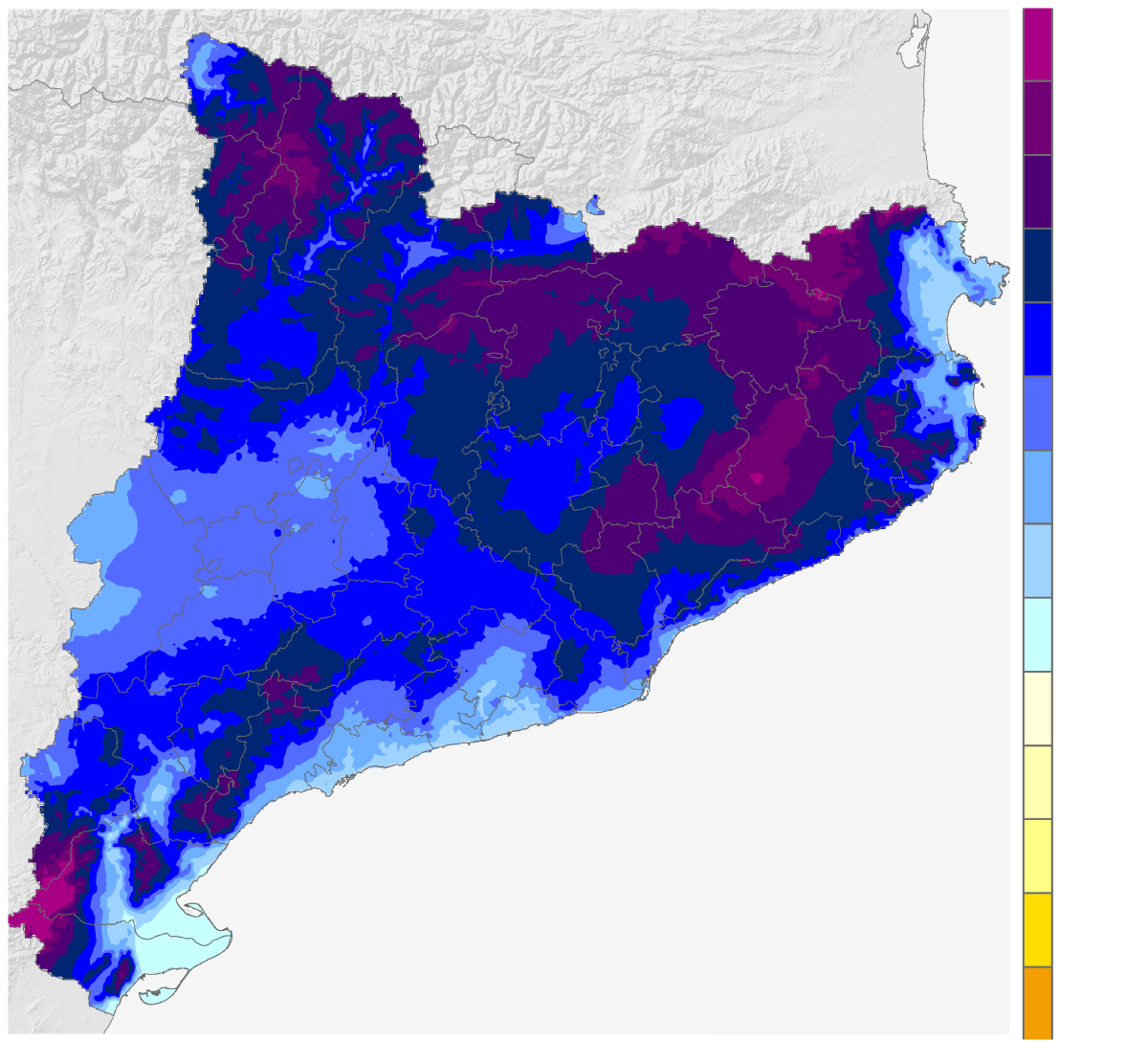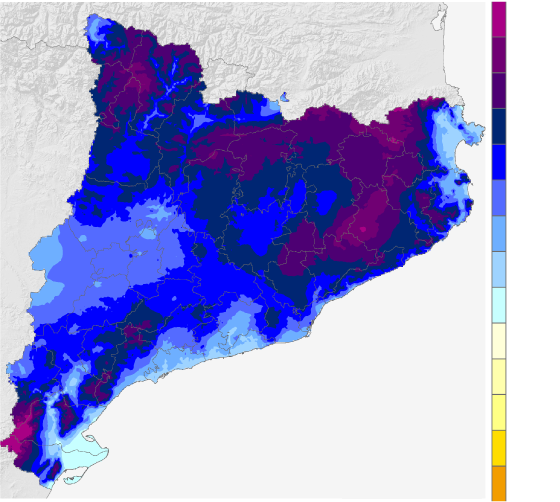Catalonia experiences the rainiest March of the century so far.
The data confirms that this month has been extremely rainy in much of the country.


BarcelonaIf you've had the feeling that it's been raining a lot lately, the data confirms it: March 2025 was the wettest of the century so far. This is according to the monthly report issued today by the Catalan Meteorological Service (SMC), which highlights that March slightly surpassed that of 2011, which until now had been the rainiest month recorded in the 21st century. It also ranks among the wettest March months ever recorded in our country, comparable to 1974.
According to the report, March has been "extremely" rainy in most regions, and only at the two ends of the Catalan coast and in the northwest of the Aran Valley has the rainfall been less abundant, although the month is also classified as rainy. And the data goes even further: Catalonia has not experienced such a rainy month since January 2020, when storm Glòria hit. These figures also highlight the severe drought we have experienced in recent years.
The constant disturbances that have been visiting us throughout March have been responsible for leaving so much water, as well as the offshore winds. The yeasts and the effects of storms such as Jana, Martinho, and Konrad have brought especially significant rainfall throughout the month. All this thanks to the fact that the anticyclones have been located for many days in central and northern Europe – where March has been atypically dry and sunny – which has allowed low pressure to circulate further south and fully affect our home.
More than 300 l/m² in the headwaters
The March rains have hit where they were most needed, in the headwaters of the country's most important rivers, where in some cases they have exceeded 300 l/m². Noteworthy, for example, were the 326 l/m² accumulated in Ulldeter (at an elevation of 2,410 m in Ripollès) and the nearly 318 l/m² in Port del Comte (at an elevation of 2,290 m in Solsonès), where the Ter and Cardener rivers originate, respectively. In Espot (2,519 m in Pallars Sobirà) and Núria (1,971 m in Ripollès), 393 and 309 l/m² have also accumulated, respectively. In the high Pyrenees, precipitation has fallen in the form of snow, with over a meter of new snow accumulating throughout the month.
Water is pouring into rivers that have seen their flow soar, pushing up reservoirs in the inland basins by more than 30 points in a single month. They are currently at over 62% capacity and are continuing to rise, awaiting all the snow that should arrive from the thaw throughout a spring that is shaping up to be rainy. These rains have left unimaginable images just a few weeks ago, such as the Baells reservoir being full and opening its floodgates, or the church of Sant Romà de Sau being under water again years later.
There are areas of the country where it has rained more. For example, in Els Ports, more than 500 l/m² fell this March, and in the Montseny area, there are records exceeding 400 l/m². As the rainfall has been widespread, the Catalan reservoirs of the Ebro Hydrographic Confederation (CHE) have also soared and are now approaching 80%.
A cold March
March has also been mostly colder than normal, with values below the climatic average. Temperatures have dropped the most in the high mountains, where anomalies are around two degrees below average. On the coast, however, temperatures have been more normal, with warmer values recorded only in some areas of the Central Depression and along the northern and southern coasts.
This is mainly due to the heavy cloud cover. This has meant that maximum temperatures have not risen much during the day, while minimum temperatures have been more restrained, with more moderate cold at night.



